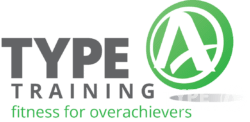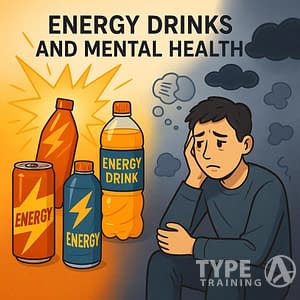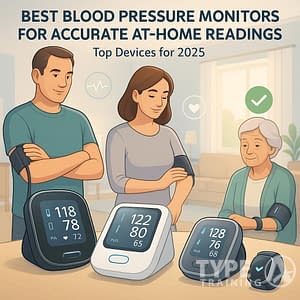Your body usually sends warning signals before serious injuries show up. If you know what to look for, you can save yourself a lot of pain and time stuck in rehab.
Common injuries treated by corrective exercise specialists can often be avoided by recognizing these early warning signs.
Manhattan’s fast-paced lifestyle? It’s a recipe for movement imbalances. All those hours hunched at a Midtown desk or lugging heavy bags through packed subway stations? Yeah, your muscles and posture take a hit.
Common injuries treated by corrective exercise specialists often stem from the stresses of city life.
Popular posts:
These daily habits build up muscle tension, mess with your posture, and set you up for injury down the line.
Common injuries treated by corrective exercise specialists are often caused by the daily habits we overlook.

Corrective Exercise Specialists in NYC treat a wide range of common injuries treated by corrective exercise specialists including lower back pain, neck strain, knee problems, shoulder impingement, and hip dysfunction through targeted movement assessments and personalized exercise programs. Whether you’re dealing with chronic pain from your commute or bouncing back from a sports mishap, these pros dig into the real causes of your discomfort instead of just slapping a band-aid on symptoms.
From Wall Street execs battling tech neck to Upper East Siders with hip tightness from city walking—corrective exercise tackles the unique movement headaches that come with NYC living. If you get which injuries respond best and how the process works, you’re way ahead in taking care of yourself.
Common injuries treated by corrective exercise specialists often require specific movements to alleviate pain.
Key Takeaways
- Corrective exercise specialists handle urban injuries like back pain, neck strain, and posture issues using movement analysis and targeted exercises.
- They rely on scientific assessments to pinpoint muscle imbalances and compensation patterns that lead to pain and dysfunction.
- The focus is on fixing root causes, not just symptoms, so you can move better and dodge future injuries.
Fundamental Principles of Corrective Exercise

Corrective exercise specialists in Manhattan stick to four core principles for tackling movement dysfunction and keeping injuries at bay. These basics help them build custom programs that actually work for each person.
Assessment and Posture Evaluation
Your corrective exercise journey always starts with a deep dive into how you move. A solid corrective exercise specialist checks out your posture, movement habits, and biomechanics to build your game plan.
You’ll probably do overhead squat tests, single-leg balance checks, and postural analysis. These tests often reveal stuff like forward head posture from hours at a computer or tight hip flexors from subway rides.
Key Assessment Components:
- Static posture analysis
- Dynamic movement screens
- Range of motion testing
- Muscle activation patterns
Your specialist documents all those little compensation patterns that sneak in thanks to city living. For busy Chelsea folks, it might be rounded shoulders from laptop work or stiff ankles from endless walks on concrete.
They also factor in your daily grind and workspace. A Financial District exec faces different movement hurdles than a Tribeca artist or an Upper East Side trainer.
Movement Patterns and Biomechanics
Good movement patterns are key for avoiding injuries and performing your best. Your body’s like a chain—if one link’s off, the whole thing feels it.
Movement quality assessment shows where your body’s picking up the slack for weak spots. Stuff like knees caving in during squats or leaning too far forward overhead pops up a lot.
Biomechanical analysis digs into how you move during everyday stuff—walking up subway stairs, hauling groceries, or sitting at your Midtown desk for hours.
Primary Movement Patterns:
- Squatting and lunging
- Pushing and pulling
- Rotating and bending
- Single-leg balance
Your specialist spots the habits that up your injury risk. Bad hip hinge? That’s a classic cause of lower back pain for SoHo folks who stand or walk all day.
They use exercise science to fix the real issues, not just the symptoms. It’s a smarter way to actually improve how you move.
Muscular Imbalances and Stability
Muscular imbalances happen when some muscles are too tight or strong while their opposites are weak or lazy. Over time, this throws off your movement and leads to pain.
Your corrective exercise program tackles both the overactive and the underactive muscles. The idea is “proximal stability promotes distal mobility”—basically, get your core stable so your limbs can move right.
Core stability is the base for everything. If your spine and pelvis are solid, your arms and legs work better and you’re less likely to get hurt.
Common Imbalance Patterns:
- Upper crossed syndrome (forward head, rounded shoulders)
- Lower crossed syndrome (anterior pelvic tilt, tight hip flexors)
- Lateral imbalances (one hip or shoulder higher than the other)
City life in Manhattan creates predictable patterns. Carrying a heavy bag on one shoulder while weaving through the West Village? That’s a recipe for lateral imbalances.
Your specialist uses their anatomy know-how to figure out which muscles need a boost and which need to chill out. This way, you get results without wasting time.
Integration of Flexibility and Strength Training
The best corrective exercise programs blend flexibility work with strength training. You need both to fix movement and keep injuries away.
The corrective exercise continuum follows a sequence: calm down overactive muscles, stretch tight spots, wake up lazy muscles, and then practice moving right.
Flexibility training uses static stretching, dynamic warm-ups, and self-myofascial release. These help your range of motion and cut down on tension that messes with movement.
Integration Sequence:
- Inhibit: Foam rolling and trigger point release
- Lengthen: Static and dynamic stretching
- Activate: Isolated strengthening exercises
- Integrate: Functional movement patterns
Strength work targets weak muscles and builds better control. You’ll start with simple moves and work up to more complex stuff that challenges your stability and coordination.
This scientific approach is what makes corrective exercise effective for injury treatment. Learn more about the anatomy, biomechanics, and proven principles.
Common Injuries Treated by Corrective Exercise Specialists
Corrective exercise specialists in Manhattan see all kinds of injuries from desk-bound pros and active New Yorkers. There’s chronic back pain from sitting too much, knee trouble from pounding the pavement, shoulder issues from slouching, and ankle sprains from dodging crowds.
For instance, common injuries treated by corrective exercise specialists can include chronic back pain, knee issues, and more.
Back Pain and Spinal Conditions
Back pain hits tons of Manhattan folks who spend forever at their computers. Your spine takes a beating from bad posture and repetitive moves.
Many of the common injuries treated by corrective exercise specialists come from repetitive stress and poor posture.
Common spinal conditions include:
-
- Lower back strain from lifting
- Herniated discs from moving wrong
- Muscle imbalances from sitting too long
Addressing common injuries treated by corrective exercise specialists is crucial for long-term health.
- Postural dysfunction from forward head posture
Conservative management of common musculoskeletal injuries means skipping stuff that makes it worse and building up strength. A corrective exercise specialist in the Upper East Side checks your movement and spots muscle imbalances.
In fact, understanding common injuries treated by corrective exercise specialists can empower you to prevent future issues.
Your plan usually works your glutes and deep core—those muscles often go sleepy from all that sitting in Financial District offices.
Corrective exercises target the specific movement habits that feed your back pain. You’ll pick up smarter lifting techniques and better posture to keep pain from coming back.
Knee Injuries and ACL Tears
Knee injuries are everywhere among New Yorkers who run in Central Park or play sports in Chelsea. Your knees take a beating from all that impact on hard city surfaces.
Common injuries treated by corrective exercise specialists often arise from city living and physical activity.
Frequent knee problems include:
-
- ACL tears from quick pivots
- Patellar tendinitis from jumping a lot
- Meniscus tears from twisting
Effective treatments for common injuries treated by corrective exercise specialists focus on rehabilitation and strength building.
- Patellofemoral pain syndrome
ACL tears usually come from bad landing habits and muscle imbalances. If your quads overpower your hamstrings, your knees get wobbly in sports.
A corrective exercise specialist helps you relearn the right movement patterns before you get back in the game. You’ll focus on single-leg stability and safer jumping.
Patellar tendinitis is common for basketball players at West Village courts. Treatment leans on eccentric strengthening and fixing hip weakness that throws your knee off.
Recovery also means working on joint mobility and cleaning up movement quirks. You’ll learn how to fire up your glutes to take stress off your knees.
Shoulder Injuries and Bursitis
Common injuries treated by corrective exercise specialists often require a multi-faceted approach.
Shoulder injuries are a pain for Manhattanites with bad posture and lots of overhead action. Rounded shoulders come from computer work and hauling bags through the subway.
Common shoulder conditions include:
- Rotator cuff tears from overuse
- Bursitis from repetitive moves
- Frozen shoulder from inactivity
- Impingement from bad posture
Bursitis flares up when your shoulder bursa gets irritated from doing the same motion over and over. This hits people who reach overhead a lot or always carry a bag on one side.
Shoulder rehab focuses on rebuilding strength and flexibility in your shoulders. A Tribeca specialist usually starts by fixing your posture.
Treatment means strengthening the back of your shoulders and stretching out a tight chest. These imbalances come from slouching at your SoHo office.
You’ll practice better shoulder mechanics for everyday stuff—lifting, reaching, whatever. Some manual therapy helps your joints move right before you get into strengthening.
Poor posture leads to many common injuries. Get our complete guide to corrective exercises for posture improvement.
Ankle Sprains and Foot-Related Issues
Ankle sprains are all too common on Manhattan’s bumpy sidewalks and in city sports. Your ankles have to react fast to shifting surfaces and crowds.
Understanding common injuries treated by corrective exercise specialists can lead to better life choices.
Common ankle and foot problems include:
- Lateral ankle sprains from rolling out
- Plantar fasciitis from standing all day
- Achilles tendinitis from tight calves
- Stress fractures from overdoing it
Sports injuries often mean ankle sprains from quick moves on courts. Your ligaments get stretched or torn if they can’t handle the load.
Common injuries treated by corrective exercise specialists can often be linked to environmental factors.
A movement assessment in NYC will show if you’re compensating after an ankle injury. You might start favoring one side or changing your walk to dodge pain.
Injury recovery focuses on getting ankle mobility back and strengthening support muscles. Your corrective exercise plan also works on balance so you don’t get hurt again.
Plantar fasciitis is a big one for New Yorkers who walk everywhere. Treatment usually means stretching your calves and building up foot strength to ease heel pain.
Understanding these patterns is crucial for treatment success. Learn about common muscular imbalances and corrective solutions.
Corrective Strategies for Injury Recovery and Prevention
Great corrective exercise strategies mix targeted rehab with proactive injury prevention. The goal? Restore solid movement, strengthen weak links, and actually fix what’s causing the problem—not just slap a temporary fix on it.
Addressing common injuries treated by corrective exercise specialists is essential for proactive health management.
Rehabilitation Exercise Approaches
Rehabilitation with corrective exercise isn’t just a checklist—it’s a progression that really digs into your unique movement hiccups. It all kicks off with a thorough assessment, where we spot muscle imbalances and those sneaky movement habits that set you up for trouble.
Common injuries treated by corrective exercise specialists are best approached with a structured recovery plan.
Phase 1: Mobility and Stability
First up, we’ve gotta get your joints moving right and stable again. Think self-myofascial release (hello, foam roller) and stretching that targets the muscles that love to stay tight and overactive.
Phase 2: Activation and Strengthening
Once you can actually move, it’s time to wake up the lazy muscles. Corrective exercise methods start with isolated moves to build up the weak spots before we throw you back into bigger, functional movements.
Phase 3: Integration
Now for the fun part—putting it all together. Multi-joint moves retrain your body to work as a team, not a bunch of solo acts compensating for each other.
A lot of Manhattan pros with desk jobs see solid progress following this kind of structure. It’s not just about treating the pain—it’s about tackling the stuff that’s causing it in the first place.
Preventing Injury Through Movement Correction
Movement correction is all about catching those bad patterns before they sideline you. In a city that never sleeps, who has time for injuries?
Common Movement Dysfunctions:
- Forward head posture from computer marathons
- Rounded shoulders (upper crossed syndrome)
- Tight hip flexors from endless sitting
- Knees caving in during squats
Corrective exercise specialists use movement screens to spot these issues fast. Then they build custom interventions to get you back in line.
Movement Assessment Components:
- Overhead squat analysis
- Single-leg balance tests
- Gait analysis for your walk
- Posture checks, standing and sitting
Regular check-ins help catch little problems before they become big ones. Especially for athletes grinding it out in Manhattan gyms, that’s a game changer.
Role of Strengthening Exercises
Corrective strengthening isn’t just gym bro stuff—it’s super targeted. The goal is to fix imbalances and movement gaps, not just pile on weight.
Targeted Strengthening Areas:
- Core stabilizers for your spine
- Glutes for hip power
- Deep neck flexors for your neck
- Rotator cuff for your shoulders
You usually use lighter weights and really focus on moving right. Injury prevention through strengthening lays down the foundation for moving well, not just moving heavy.
Progressive Loading Strategies:
- Isometric holds for stability
- Slow, controlled reps for motor control
- More complex functional patterns
- Sport-specific stuff for athletes
Trainers in Chelsea and the Upper East Side love mixing these in. You end up with movement patterns that are just way less likely to get you hurt.
Prehabilitation and Athletic Performance
Prehabilitation—aka prehab—is all about staying ahead of injuries and boosting performance. It’s a must for athletes and anyone active in Manhattan’s sports scene.
Common injuries treated by corrective exercise specialists can be managed with proper technique and awareness.
Prehab Program Components:
- Assessing movement quality
- Targeted mobility drills
- Neuromuscular control work
- Load management (so you don’t overdo it)
Athletes in Midtown and the Financial District get a lot out of structured prehab. It helps them dodge common injuries before they even start.
Identifying common injuries treated by corrective exercise specialists can help in tailoring effective programs.
Performance Benefits:
- Smoother, more efficient movement
- Better power transfer
- Faster recovery between workouts
- Lower risk of injury in competition
Exercise pros often blend prehab right into regular training. It just becomes part of the routine, not some extra chore.
Ultimately, common injuries treated by corrective exercise specialists highlight the need for preventative care.
Professional Qualifications and Collaboration in Corrective Exercise
If you’re working as a corrective exercise specialist in Manhattan, credentials matter—a lot. You need the right certs and a strong network with healthcare providers to really make an impact in this city.
Certification and Training Requirements
You can’t just wing it—proper certification is non-negotiable. The NASM Corrective Exercise Specialist (CES) is the big one, focusing on movement assessment and smart program design.
Key Certification Options:
- NASM CES: The industry go-to
- ACE Corrective Exercise Specialist: Good for chronic orthopedic stuff
- NSCA: Leans into sports medicine
- Corrective Exercise Institute: Deep dive into movement assessment
Expect 150-200 hours of coursework—anatomy, biomechanics, movement screens, all that jazz. You’ll take written and practical exams.
Most folks start as personal trainers and then specialize. Many in Manhattan come from athletic training or clinical exercise backgrounds, which is clutch when you’re helping Wall Street types with desk-induced posture problems.
Many professionals are now recognizing the importance of addressing common injuries treated by corrective exercise specialists.
You have to keep learning, too—20-30 hours of continuing ed each year to keep your certs fresh.
Interdisciplinary Collaboration in Sports Medicine
Teamwork is everything here. You’ll work alongside physical therapists, chiros, and orthopedic docs all over Manhattan. Referrals go both ways, and everyone benefits.
Common Collaboration Partners:
- Physical therapists (for post-rehab progress)
- Orthopedic surgeons (pre/post-op conditioning)
- Sports medicine docs (injury prevention)
- Massage therapists (soft tissue work)
- Nutritionists (help with inflammation)
In Midtown and the Financial District, corporate wellness programs send a lot of clients your way. Office workers with posture issues? All day, every day.
By understanding common injuries treated by corrective exercise specialists, the public can enjoy healthier lives.
If you have an athletic training background, you’ll mesh well with sports med teams. Your movement assessment skills fill a gap between rehab and performance.
You have to communicate well—share notes, update referring docs, and keep everyone in the loop. That way, Manhattan clients with pain or movement issues get the best results.
Emerging Trends and Best Practices
This field changes fast. New assessment tech and treatment ideas pop up all the time. Virtual movement analysis is basically standard now in Manhattan.
Current Trends:
-
- 3D movement analysis: For next-level posture checks
- Wearable tech: Real-time feedback
- Telehealth: Coaching busy clients remotely
Common injuries treated by corrective exercise specialists can also be improved by utilizing modern technology.
- Specialized programs: Seniors in the Upper East Side, for example
Evidence-based practice is still king. You have to stay on top of the latest research if you want to serve NYC’s health-conscious crowd.
Personalized programming is getting more attention. Residents in Chelsea and SoHo have their own quirks and schedules, so you have to tailor everything. Good assessment skills make that possible.
More personal trainers in Manhattan are adding corrective exercise credentials, too. It’s just part of leveling up and meeting clients where they are.
The right specialist makes all the difference. Learn about the benefits of hiring a qualified corrective exercise specialist.
Frequently Asked Questions
Corrective exercise specialists zero in on movement problems that cause pain and injury in NYC’s go-go-go culture. They help with muscle imbalances from desk life, repetitive strain injuries, and chronic pain—all too common here.
What types of muscle imbalances can corrective exercise specialists help with?
Your specialist can spot and treat all kinds of imbalances that come from the Manhattan lifestyle. Upper crossed syndrome is a big one for folks hunched over computers in Midtown and the Financial District.
That usually means tight chest muscles and a weak upper back. Lower crossed syndrome shows up a lot, too—especially for desk workers in SoHo and Chelsea.
They’ll check for tight hip flexors and glute weakness from all that sitting. Then they’ll build exercises to strengthen the weak links and loosen up the tight spots.
Carrying heavy bags or always favoring one side? That creates lateral imbalances, and your corrective exercise specialist can help even things out with targeted routines.
How can corrective exercise mitigate the risk of repetitive strain injuries?
Repetitive strain injuries are everywhere in Manhattan—think typing, texting, or doing the same motion all day. Your specialist will spot the movement patterns that put too much stress on certain joints or muscles.
They’ll look at how you sit, work, and move in your Upper East Side office. Sometimes just tweaking your posture makes a world of difference.
You’ll learn better ergonomics and get exercises to balance out repetitive motions. They focus on building up support muscles and keeping your joints moving well.
Regular sessions can break up tissue adhesions and cut down inflammation. It’s a proactive way to keep little annoyances from turning into chronic problems.
What role does a corrective exercise specialist play in post-surgery rehabilitation?
In conclusion, common injuries treated by corrective exercise specialists can greatly benefit from specialized care.
Your specialist is the bridge between physical therapy and getting back to real life. After formal rehab wraps up, they’re there to help you transition safely.
Corrective exercises aren’t just regular PT—they focus on movement quality, not just brute strength. Your specialist makes sure you relearn how to move so you don’t get hurt again.
They’ll tailor the program to your surgery and recovery timeline. Knee surgery? Shoulder repair? They’ll address the compensations you picked up during healing.
Your specialist keeps in touch with your surgeon and PT. That team approach smooths out your move from rehab to full function.
Can corrective exercises be used to address chronic lower back pain?
Chronic lower back pain is basically a rite of passage for Manhattan commuters and office warriors. Your specialist doesn’t just mask symptoms—they dig in to find the real causes.
They’ll spot dysfunctions like poor hip mobility, weak core muscles, or tight hip flexors—big culprits for folks in Tribeca and West Village.
Your program will include exercises for spine stability and hip mobility. You’ll also learn how to lift and sit better in your day-to-day.
Movement assessments can reveal hidden imbalances that other treatments might miss. The exercises are dialed in to address your unique issues.
What is the process for diagnosing movement dysfunctions that lead to injury?
Your specialist starts with a full movement assessment. They’ll watch you walk, sit, stand, and move in their Manhattan studio.
Static posture checks show muscle imbalances and joint limits. They’ll look at your alignment from head to toe while you stand naturally.
Dynamic tests reveal how you move during real-life activities—squats, reaching, twisting, all that. Sometimes they’ll use special equipment for extra precision.
They’ll also ask about your daily habits and workspace. Knowing your lifestyle helps them figure out what’s really driving your movement problems.
How do corrective exercise specialists differ from traditional physical therapists in their approach?
Corrective exercise specialists and physical therapists serve different populations with pretty distinct approaches. Physical therapists treat injuries and medical conditions that need rehabilitation.
A corrective exercise specialist focuses more on movement optimization and injury prevention. They usually work with healthy folks who just want to move better and dodge future issues.
Physical therapists lean on manual therapy techniques and medical interventions. On the other hand, your corrective exercise specialist sticks mostly to exercise and movement education.
The treatment timeline is pretty different, too. Physical therapy targets acute conditions and follows structured protocols.
Corrective exercise specialists offer ongoing support for long-term movement health. They help you keep up proper movement patterns—especially useful if you’re hustling through that busy NYC life.
Overall, common injuries treated by corrective exercise specialists require a dedicated approach to recovery.











